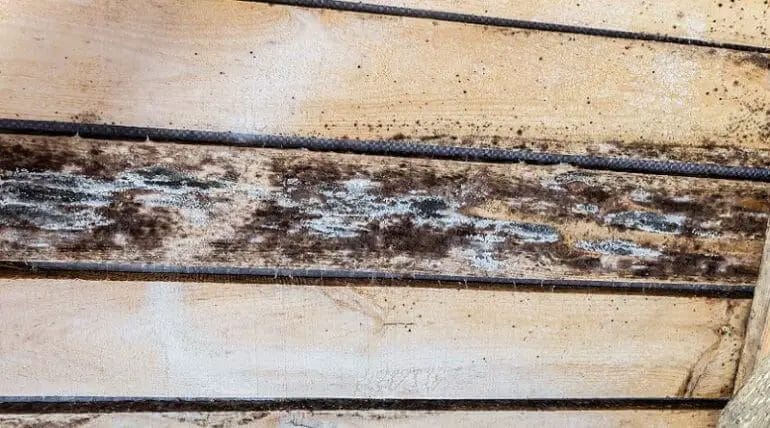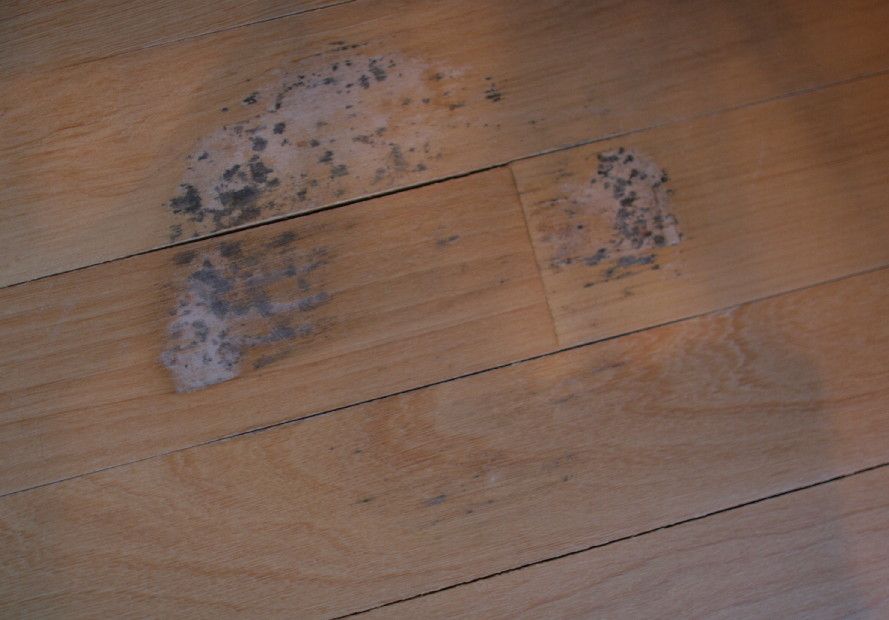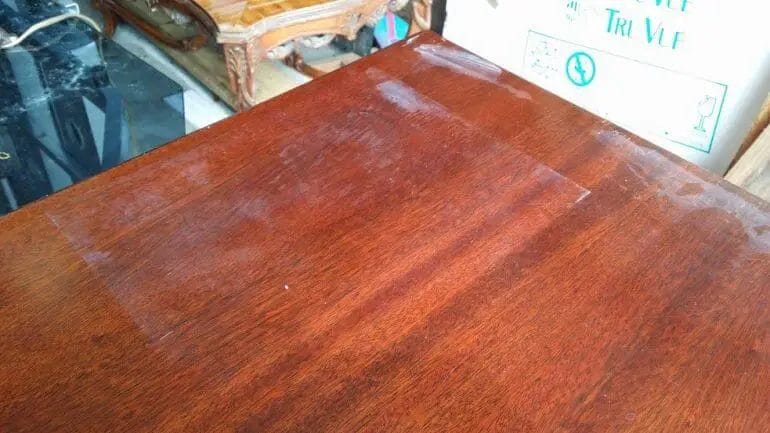Wondering if bleach can damage wood? While bleach is a powerful and effective disinfectant, it can have negative effects on wood surfaces. When used improperly or in high concentrations, bleach can cause discoloration, warping, and even weakening of the wood. It is important to use caution and follow manufacturer’s instructions when using bleach on wood. Consider alternative wood cleaners or consult a professional before using bleach on your precious wooden surfaces.

Preventing Wood Damage: Alternatives to Bleach for Cleaning
Wood is a versatile and beautiful material that adds warmth and character to any home. However, it is susceptible to damage if not properly cared for. Regular cleaning of wood surfaces is essential to maintain their appearance and longevity. Many people turn to bleach for cleaning wood, as it is a powerful disinfectant and stain remover. However, bleach can actually do more harm than good, as it can weaken the wood fibers and cause discoloration over time. In this section, we will explore some alternative methods for cleaning wood that are effective and safe.

1. Vinegar
Vinegar is a natural and non-toxic cleaner that can be used on wood surfaces. Its acidic properties make it effective in removing dirt, grime, and even some stains. To use vinegar for cleaning wood, simply mix equal parts vinegar and water in a spray bottle. Spray the mixture onto the wood surface and wipe it clean with a soft cloth or mop. Vinegar also has the added benefit of being a natural deodorizer, leaving your wood smelling fresh.
2. Lemon Juice
Lemon juice is another natural alternative to bleach for cleaning wood. The citric acid in lemon juice helps to break down dirt and remove stains. To use lemon juice for cleaning wood, mix one part lemon juice with two parts water. Apply the mixture to the wood surface and gently scrub with a soft brush or cloth. Rinse with clean water and dry thoroughly. Lemon juice not only cleans wood effectively but also leaves a pleasant citrus scent behind.
3. Hydrogen Peroxide
Hydrogen peroxide is a mild disinfectant and stain remover that can be used on wood surfaces. It is particularly effective in removing tough stains like ink or wine. To use hydrogen peroxide for cleaning wood, pour a small amount onto a clean cloth and gently rub the stained area. Rinse with clean water and dry thoroughly. It is important to note that hydrogen peroxide may lighten the color of the wood, so it should be used sparingly and with caution.
4. Tea Tree Oil
Tea tree oil is a natural antiseptic and can be used to clean and disinfect wood surfaces. It has strong antimicrobial properties that can help kill bacteria and prevent mold and mildew growth. To use tea tree oil for cleaning wood, mix a few drops with water in a spray bottle. Spray the mixture onto the wood surface and wipe clean with a soft cloth. Tea tree oil also leaves a pleasant and refreshing scent.
5. Olive Oil and White Vinegar
A mixture of olive oil and white vinegar can be used to clean and condition wood surfaces. The vinegar helps to remove dirt and grime, while the olive oil moisturizes and protects the wood. Mix equal parts olive oil and white vinegar in a spray bottle and shake well. Spray the mixture onto the wood surface, let it sit for a few minutes, and then wipe clean with a soft cloth. This method not only cleans and nourishes the wood but also adds a natural shine.
In summary, while bleach may seem like a strong cleaning agent for wood, it can actually cause damage and discoloration over time. Fortunately, there are several effective and safe alternatives available. Vinegar, lemon juice, hydrogen peroxide, tea tree oil, and a mixture of olive oil and white vinegar are all excellent options for cleaning and maintaining the beauty of your wood surfaces. Choose the method that suits your needs and enjoy clean and well-preserved wood for years to come.

Restoring Damaged Wood: Repairing Bleach Stains and Discoloration
Wood furniture and surfaces can add warmth and beauty to any space. However, over time, they can become damaged or discolored, detracting from their original beauty. One common issue that homeowners face is bleach stains and discoloration on wood. Whether it’s from accidental spills or cleaning mishaps, bleach can leave unsightly marks on wood surfaces. Luckily, there are steps you can take to restore the damaged wood and bring back its natural color and luster.
1. Assess the Damage
The first step in repairing bleach stains and discoloration on wood is to assess the extent of the damage. Take a close look at the affected area and determine the depth of the stain. If the bleach has only affected the surface, the repair process will be relatively simple. However, if the bleach has penetrated deeper into the wood, it may require more extensive treatment.
2. Sand the Surface
Once you have assessed the damage, it’s time to start the repair process. Begin by sanding the surface of the wood. Use a fine-grit sandpaper to gently sand the stained area. This will help to remove the top layer of damaged wood and prepare it for further treatment.
3. Apply Wood Stain
After sanding, it’s time to apply wood stain to the damaged area. Choose a wood stain that matches the original color of the wood as closely as possible. Apply the stain using a clean cloth or a foam brush, following the manufacturer’s instructions. Make sure to apply an even coat and allow it to dry completely before proceeding to the next step.
4. Blend with Surrounding Wood
Once the stain has dried, you may notice that the repaired area looks slightly different from the surrounding wood. To blend it in seamlessly, you can use a technique called “feathering.” Take a clean cloth or a soft brush and lightly feather the stain onto the surrounding wood. This will help to create a more uniform appearance and blend the repaired area with the rest of the surface.
5. Seal the Surface
Finally, to protect the repaired area and give it a finished look, it’s essential to seal the surface. Choose a clear wood sealer or varnish and apply a thin, even coat over the entire surface. Allow the sealer to dry according to the manufacturer’s instructions before using the furniture or surface.
Summary
Restoring damaged wood affected by bleach stains and discoloration requires a step-by-step approach. Assessing the extent of the damage, sanding the surface, applying wood stain, blending with surrounding wood, and sealing the surface are the key steps in the process. By following these steps, you can effectively repair bleach stains and discoloration on wood and restore its natural beauty.

Protective Measures: Sealing and Treating Wood Against Bleach Damage
Wood is a versatile and natural material that is commonly used in various applications, from furniture to flooring. However, exposure to bleach can cause significant damage to wood surfaces, leading to discoloration, weakening, and even structural problems. To prevent such damage, it is essential to implement protective measures that involve sealing and treating wood effectively.
1. Understanding the Effects of Bleach on Wood
Before delving into protective measures, it is crucial to understand how bleach affects wood. Bleach contains harsh chemicals that can break down the lignin in wood, which is responsible for its strength and color. This breakdown leads to the loss of structural integrity and a bleaching effect on the wood’s natural color.
Additionally, bleach can penetrate deep into the wood fibers, causing long-term damage that may not be immediately visible. Over time, the wood may become weak, brittle, and prone to decay.
2. Sealing Wood Surfaces
Sealing wood surfaces is an effective way to protect against bleach damage. The sealing process involves applying a protective barrier to the wood, preventing bleach from penetrating and causing harm.
There are several sealants available for wood, including polyurethane, varnish, and epoxy. These sealants create a waterproof and resistant layer on the surface, shielding the wood from bleach exposure. It is important to choose a sealant that is specifically designed for outdoor or indoor use, depending on the application.
Before applying the sealant, it is essential to prepare the wood surface properly. This involves cleaning the wood, removing any dirt or debris, and sanding it to create a smooth and even surface. Once prepared, the sealant can be applied using a brush or roller, following the manufacturer’s instructions.
Regular maintenance is necessary to ensure the sealant remains effective. This may involve reapplying the sealant every few years or as recommended by the manufacturer.
3. Treating Wood with Protective Coatings
In addition to sealing, treating wood with protective coatings can provide an extra layer of defense against bleach damage. These coatings penetrate the wood fibers, strengthening them and enhancing their resistance to bleach exposure.
One common treatment option is wood preservatives, which contain chemical compounds that protect against rot, decay, and fungal growth. These preservatives not only safeguard the wood but also prevent bleach from causing significant damage. They can be applied by brushing or spraying onto the wood surface, following the manufacturer’s guidelines.
Another effective treatment option is wood oils or stains. These products nourish the wood, enhancing its natural beauty and providing a protective layer against moisture and bleach. Wood oils and stains are available in various shades to suit different preferences and can be easily applied with a brush or cloth.
4. Regular Cleaning and Maintenance
Proper cleaning and maintenance are crucial for prolonging the lifespan of treated wood and preventing bleach damage. Regularly clean the wood surfaces using mild soap and water, avoiding harsh chemicals that can strip away protective coatings.
Inspect the wood periodically for signs of wear, such as discoloration or peeling of the sealant or coating. If any damage is identified, promptly address it by reapplying the sealant or coating as necessary.
In summary, protecting wood from bleach damage involves sealing the wood surfaces with suitable sealants and treating them with protective coatings. By implementing these measures and maintaining regular cleaning and maintenance, the wood can remain resilient and retain its natural beauty for years to come.
DIY Solutions: Natural Wood Cleaners to Avoid Bleach Usage
If you’re looking for a safe and eco-friendly way to clean your wooden furniture and surfaces, then natural wood cleaners are the way to go. These DIY solutions not only help to maintain the beauty of your wood but also eliminate the need for harsh chemicals like bleach. In this section, we will explore some effective and easy-to-make natural wood cleaners that you can try at home.
1. Vinegar and Water Solution
Vinegar is a versatile ingredient that can be used for various cleaning purposes, including wood. To make a natural wood cleaner using vinegar, simply mix equal parts of white vinegar and water in a spray bottle. Shake well before use and spray it onto a soft cloth or mop. Gently wipe your wooden surfaces to remove dirt, grime, and grease. Vinegar helps to disinfect and deodorize the wood, leaving it fresh and clean.
2. Lemon Juice and Olive Oil Polish
If you want to give your wooden furniture a natural shine and polish, a combination of lemon juice and olive oil can work wonders. Mix one part lemon juice with two parts olive oil in a small bowl. Apply the mixture to a soft cloth and gently rub it onto the wood in circular motions. Let it sit for a few minutes, then buff the wood with a clean cloth to remove any excess oil. This homemade polish not only cleans the wood but also adds a beautiful sheen to it.
3. Baking Soda Paste
Baking soda is a natural cleaner that can effectively remove stains and grime from wood. To make a baking soda paste, mix equal parts baking soda and water in a small bowl until it forms a thick consistency. Apply the paste to a soft cloth and gently scrub the stained area. Rinse with water and wipe dry. The baking soda paste will help to lift the stain without damaging the wood.
4. Tea Tree Oil Disinfectant
Tea tree oil is known for its antimicrobial properties, making it an excellent natural disinfectant for wood. Mix 10-15 drops of tea tree oil with a cup of water in a spray bottle. Shake well and spray the solution onto the wooden surface. Wipe it clean with a soft cloth or mop. Tea tree oil not only cleans the wood but also helps to eliminate bacteria and fungi that may be present.
5. Coconut Oil and Beeswax Polish
To restore the natural beauty of your wooden furniture and enhance its durability, a combination of coconut oil and beeswax can be used. Melt equal parts coconut oil and beeswax in a double boiler. Allow the mixture to cool slightly, then apply it to the wood using a soft cloth. Gently massage the polish into the wood, covering all surfaces. Let it sit for a few minutes, then buff the wood with a clean cloth to reveal a lustrous shine.
In summary, using natural wood cleaners is a great way to maintain the appearance and longevity of your wooden furniture without the need for bleach or other harsh chemicals. These DIY solutions are cost-effective, eco-friendly, and easy to make at home. So, give them a try and enjoy clean and beautiful wood surfaces while protecting the environment.
Does bleach damage wood?
Yes, bleach can damage wood if used improperly. It can strip the natural color and finish of the wood, and weaken its structure if used in high concentrations. It’s important to dilute bleach properly and test it on a small, inconspicuous area before using it on the entire wood surface.
Conclusion
In conclusion, it is important to note that bleach can indeed damage wood if not used properly. While bleach may be effective in removing stains and mold, it can also alter the natural color and texture of the wood, resulting in irreversible damage. Therefore, it is recommended to avoid using bleach on wood surfaces unless absolutely necessary and to always follow the manufacturer’s instructions.
When dealing with wood furniture or flooring, it is advisable to explore alternative cleaning methods that are specifically designed for wood. This will help maintain the integrity and longevity of the wood while still achieving desired cleaning results. Remember, prevention and regular maintenance are key to preserving the beauty and durability of your wooden surfaces.
